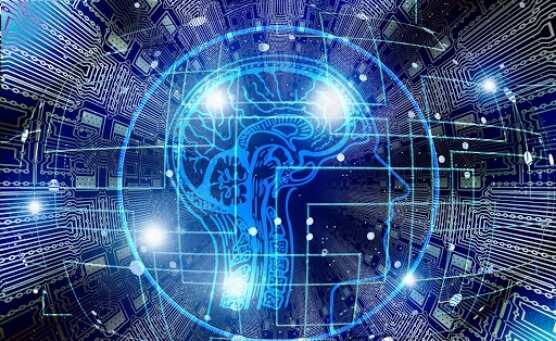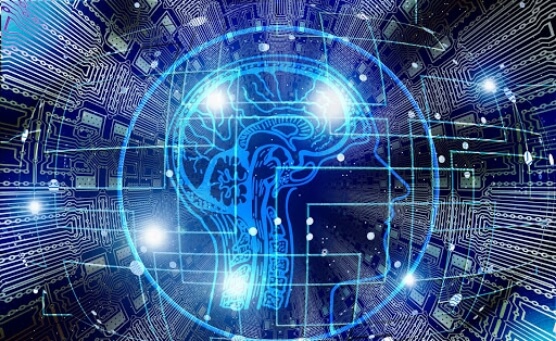The Story Of AI And How It Is Reshaping The Communication Channels Towards Customers

While only about 15 percent of businesses currently use artificial intelligence (AI), this number is expected to double in the coming year. This technology is being used by businesses to streamline various work processes while reducing the number of man-hours invested in repetitive tasks.
Most business owners have heard the term artificial intelligence thrown around for years but fail to grasp just what this term means. If you are curious about AI and want to learn more, then this article is for you. Read below to learn more about the history of artificial intelligence and how you can utilise it to grow and expand your business.
Understanding the History of Artificial Intelligence
While you may think artificial intelligence is a relatively new concept, this could not be farther from the truth. It has only been about a century since the idea of AI has gone from science fiction to an actual technological revolution.
Most people credit Alan Turing, a World War 2 code-breaker and British mathematician, with coming up with the idea of artificial intelligence in the 50s. The Turing test still used by many in the AI community to assess a machines ability to think like Alan Turing developed a human.
During the 1950s, many of Turing’s idea about artificial intelligence were laughed at and ridiculed by scientists all over the world. However, the ideas developing by Turing would set the wheels in motion for the development of artificial intelligence.
Marvin Minsky Picks up the AI Torch
One of the most important moments in the history of artificial intelligence is the founding of the Massachusetts Institute of Technology’s AI laboratory. This laboratory was co-founded by a cognitive scientist named Marvin Minsky in 1959. One of the coolest fun facts about Minsky is that he was an advisor to director Stanley Kubrick during the filming of the movie “2001: A Space Odyssey.”
The advancements made in the Massachusetts Institute of Technology’s AI lab during the 1960s and 1970s would shape the world of artificial intelligence for years to come. In this laboratory, Marvin Minsky and his fellow scientists would conduct studies and collect data that is still being used by AI enthusiasts to this day.
The Modern AI Industry is Booming
The iconic rise of the personal computer in the 1980s was the engine that drove innovation in the AI field. The modern world of artificial intelligence is booming thanks to individuals like the founder of Tesla Elon Musk. Also, the work of Stephen Hawking inspired many in the science community to take another look at how artificial intelligence can be used in every facet of human life.
One of the most common uses for artificial intelligence in today’s market is in the collection of big data. Businesses who have to handle lots of data utilise (utilise)the power of artificial intelligence to make this process easier and more efficient. Large organisations like Netflix and even Google collect data and use it to fuel its AI-based technology. The more data companies are able to give their AI-based programs, the more efficient and accurate they ultimately become.
Learning the Difference Between Artificial Intelligence and Machine Learning
Some business owners make the mistake of thinking that terms like artificial intelligence and machine learning are interchangeable. In all actuality, some key distinctions separate these two terms.
What Is Artificial Intelligence?
The first thing you need to know when trying to discern between these two terms is what artificial intelligence is. The primary goal of artificial intelligence programs is to mimic the decision-making abilities of the human brain. Artificial intelligence can only work on machines that can think as if they were human. In essence, artificial intelligence is a much broader concept than other disciplines like machine learning.
Programs and machines equipped with artificial intelligence can plan and solve problems, as well as understand a variety of different languages. Scientists and technology professionals break artificial intelligence into two main types; weak AI and general AI.
An application or software program that is considered to be weak AI will have one main task it can perform. Typically, weak AI programs cannot compensate for unseen tasks. An excellent example of a weak AI program would be the recommendations feature on Netflix or Apple’s Siri.
A general AI application can successfully perform human-like intellectual tasks. Highly advanced AI applications can take tons of data and use this information to make rational decisions with ease.
Many companies use AI-based programs to find and fix problems with their infrastructure and servers. Learn more about the benefits of these types of programs by visiting IT infrastructure and server monitoring by AppOptics.
The Lowdown on Machine Learning
Now that you have a basic understanding of what AI is, you need to understand how it is different from machine learning. Machine learning allows an algorithm to evolve over time as it collects data. The more data a machine learning-based system takes in, the more improvements it will ultimately be able to make. The main idea behind machine learning is to allow computers to learn without having to be programmed with extraneous details.
The Pros and Cons of Artificial Intelligence
Are you still on the fence about whether or not to use artificial intelligence for your business? If so, check out these AI pros and cons so you can make an informed decision about whether or not to use this technology.
PRO: AVOID PERFORMING MUNDANE TASKS
One of the most significant benefits of using artificial intelligence is that it can help you avoid performing mundane tasks on a daily basis. Most AI software is geared towards process automation and this means that you can have repetitive tasks performed in a timely and efficient manner without wasting workforce.
PRO: PRE-EMPTIVE ACTIONS ARE IDEAL FOR CUSTOMER COMMUNICATION
Using AI allows you to deliver a level of responsiveness that is far above what an actual human can provide. Websites and apps that have AI technology embedded in them are able to monitor for things like customer experience issues and distress indicators. When AI program notices these factors, they can reach out and help the consumer.
This provides your business with the opportunity to resolve customer communication issues quickly and efficiently. Offering your customers this high level of service keeps them loyal and engaged.
CON: AI MAY LEAD TO HUMAN JOB LOSS
The main complaint of people who are opposed to the use of AI is that it leads to lots of humans losing their jobs. While this may be true in the beginning stages of implementation, AI can also give humans the ability to focus on learning new skills and innovation. Many experts maintain that AI creates more prosperity over time.
PRO: CUSTOMERS CAN ALWAYS GET ANSWERS WITH THE HELP OF AI
Trying to hire an actual human to monitor customer questions and problems 24-hours a day is basically impossible. When problems arise outside of normal business hours, you need a way to help customers in a fast and effective way.
Instead of missing an opportunity to help your customers due to the time restrictions, you need to use the power of AI. If you have an AI-based program on your website or in your app, you can quickly and correctly answer questions or address customer concerns any time of the day.
Also, AI-based programs do not require lengthy training to get the job done correctly. There is simply no denying just how powerful AI can be when it comes to increasing customer communications.
PRO: THE ABILITY TO MAKE FASTER DECISIONS
In the world of business, being able to make educated decisions in a fast manner is essential. When used for things like planning and scheduling or even fraud detection, AI provides business owners with the ability to find and react to problems quickly. Also, AI makes it much easier for businesses to sort through large chunks of data without wasting a lot of time.
Find the Right AI Solutions For Your Business
Consulting with experienced technology professionals is a great way to find out how you can use the power of AI for your business. If you are looking for AI-enabled cloud telephony solutions for your business, then contact our team at Knowlarity. We provide businesses with the opportunity to automate customer communications through the power of speech recognition, reporting, and analytics.
Written By: Admin
